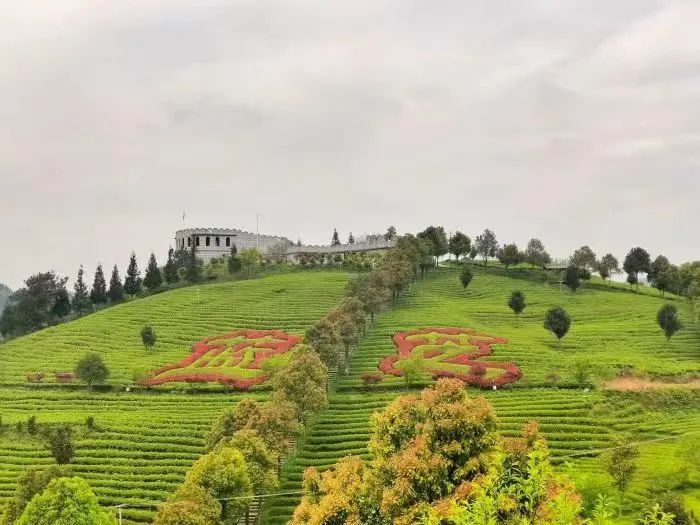Annual output value of tea industry exceeds 1.5b yuan in Kaiyang

A tea garden in Kaiyang county. [Photo/kaiyang gov.cn]
In recent years, Kaiyang county has reaped numerous benefits from tea cultivation. With an annual output of dried tea leaves exceeding 5,500 metric tons, the county's annual tea production is worth nearly 1.58 billion yuan ($221.52 million). The tea industry has benefited over 40,000 households, increasing annual incomes by an average of 12,000 yuan per household.
According to historical records, tea cultivation in Kaiyang county dates back to the Song Dynasty (960-1279) and Yuan Dynasty (1271-1368) and expanded continuously during the Ming Dynasty (1368-1644) and Qing Dynasty (1644-1911).
In 2013, "Kaiyang Selenium-rich Tea" was recognized as a nationally-protected geographical indication product. In 2018, it was honored as one of the "Top 10 Selenium-rich Brands in China."
Kaiyang county is now home to one tea-themed town, seven characteristic tea villages with a core tea plantation area of 92,000 mu (6133.33 hectares) and a picking area of 81,000 mu, 52 tea enterprises, 99 processing production lines and 23,200 square meters of processing plants. Its product range has expanded from a single premium green tea to include bulk green tea, black tea, oolong tea, white tea, and more.
Furthermore, several tea-tourism integration projects have been initiated, giving rise to a model in which tourism is promoted through tea and tea is promoted through tourism, offering experiences such as tea plantation tours, tea picking, tea processing, tea art performances, and tea purchasing.
Presented by China Daily.
黔ICP备05001922号-3
